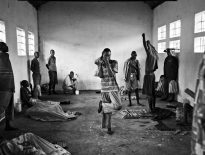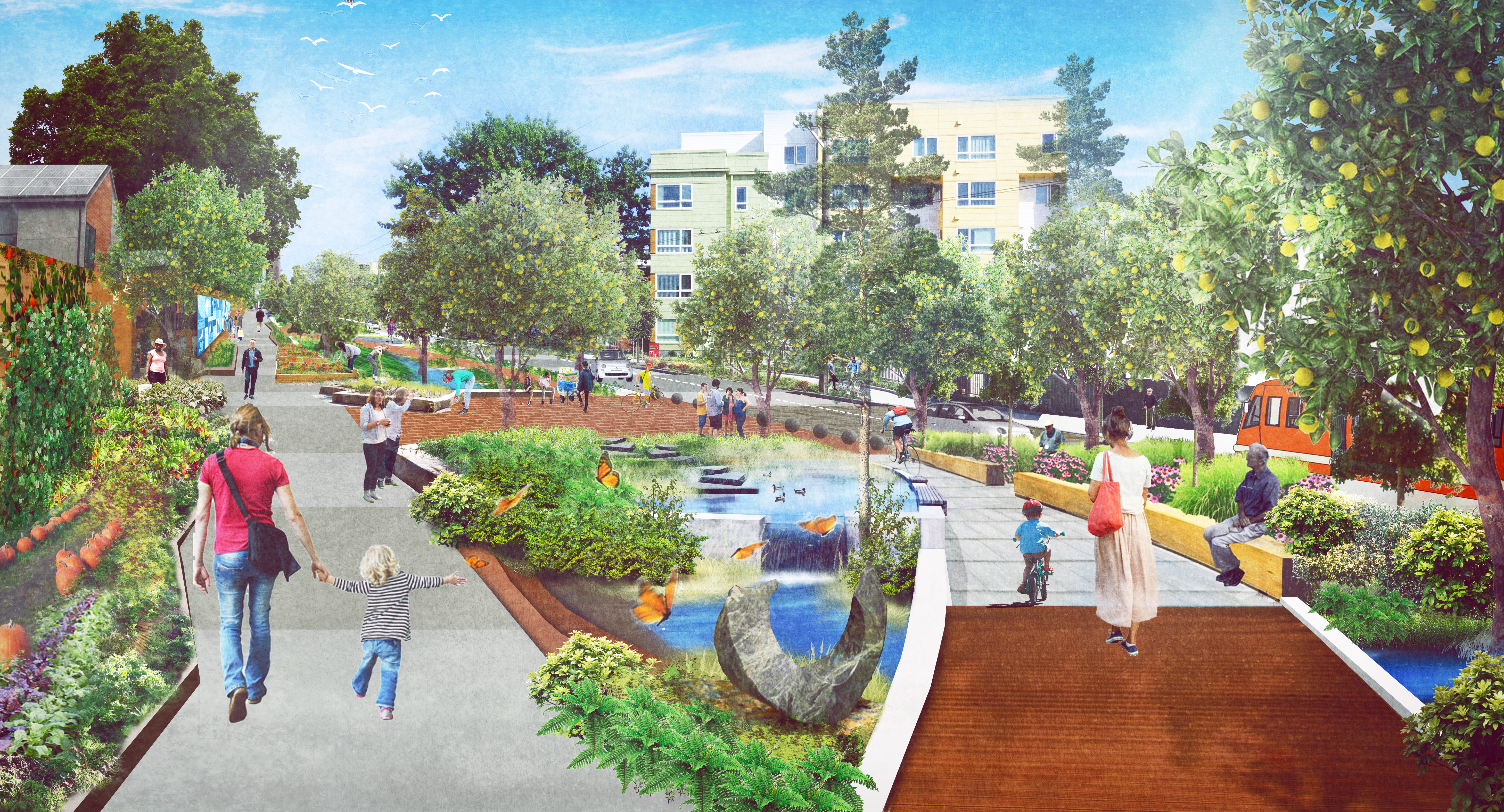The Dawn of A New Era: Solar in the Tar Sands
In the northern Alberta community of Little Buffalo, population 500, a 20.8 kW solar installation has been set up to power the First Nation’s health center, and to send additional energy back to the grid. In 2011, this community grappled with one of the largest oil spills in Alberta’s history. Today, the community deals with contaminated water, polluted air and a compromised landscape, but the people of Little Buffalo have chosen to forge a new future and to become powered by the sun.
The traditional territory of my ancestors and my Nation of the Lubicon Cree covers approximately 10,000 square kilometers of low-lying trees, forests, rivers, plains, and wetlands—which we call muskeg—in northern Alberta. My parents’ and grandparents’ generations survived by living off the land—hunting, fishing, and trapping throughout the region. I remember going out on the trapline when the water was still good to drink. But as oil and gas have come through the territory, all of this has changed. For three decades, our territory has undergone massive oil and gas development without the consent of the people and without recognition of our treaty & Indigenous rights, which are protected under Section 35 of the Canadian Constitution.
Currently there are more than 2,600 oil and gas wells in our traditional territories. Over 1,400 square kilometers of leases have been granted for tar sands development in Lubicon territory, and almost 70% of the remaining land has been leased for future development. Our way of life is being replaced by industrial landscapes, polluted and drained watersheds, and contaminated air—it’s very much a crisis situation.
Where there once was self-sufficiency, we are experiencing increased dependency on social services, as families are no longer able to sustain themselves in what was once a healthy environment with clean air, clean water, medicines, berries, and plants from the Boreal. We are seeing elevated rates of cancers and respiratory illnesses as a consequence of the toxic gases in the air and water. And while over $14 billion in oil and gas revenues have been taken from our traditional territory, our community lives in extreme poverty and still lacks basic medical services and running water.

Unceded Territory
In 1899, when Treaty 8 was officially signed in northern Alberta, treaty commissioners overlooked the Lubicon Cree due to their remote and hard-to-reach territory. The Lubicon people therefore never ceded their traditional territory to the Crown. This has led to a precarious and unstable relationship with both the provincial and federal governments as both have continuously undermined the sovereignty of the Lubicon people. For decades the Lubicon have tried to settle these outstanding land disputes, but unfortunately it serves the government’s interests to keep the Lubicon land claim outstanding due to the territory’s rich oil and gas deposits.
When the construction of an all-weather road began in the early 1970s, the Lubicon people started to contest the encroachment of their traditional territory as multinational corporations began to exploit the land. For the 14 years that followed, the Lubicon attempted to assert their rights through various court proceedings at both the provincial and federal levels. By 1988, the Lubicon concluded that it was necessary to use other means of direct action so their voices and message would be heard.
On October 15, 1988, the Lubicon people erected a peaceful blockade, which was successful in stopping oil exploitation of the territory for six days. Only then did Alberta Premier Don Getty meet with the Lubicon chief and agree to a 243-kilometer reserve under the Grimshaw Accord.
Despite this agreement, the Canadian government offered the Lubicon substandard conditions in the land settlement agreement. Even Premier Getty described the offer as “deficient in the area of providing economic stability for the future.”
Unfortunately, due to the take-it-or-leave-it approach of the federal government, the land claim negotiations continued from 1989 until 2003, when the talks broke down completely and both parties walked away from the table. To this day, the Lubicon Cree have been unable to settle a land claim, which has drastically hindered their ability to protect themselves and their traditional territory from further exploitation and destruction.
Canada’s treatment of the Lubicon has been repeatedly condemned by the United Nations, and UN Special Rapporteur Miloon Kothari has called for a moratorium on oil and gas in Lubicon territory. On March 26, 1990, the United Nations Human Rights Committee ruled that Canada’s failure to recognize and protect Lubicon land rights violated the International Covenant on Civil and Political Rights. In 2006, the United Nations Human Rights Committee again called on Canada to address outstanding land claims in Lubicon territory before granting further licences for economic exploitation, yet this resource extraction is still happening.
The Rainbow Pipeline Rupture
On April 29, 2011, a rupture in the Rainbow Pipeline resulted in a spill of about 4.5 million liters (1.2 million gallons) of oil in the Cree Lubicon territory—one of the biggest oil spills in Alberta’s history. When the pipeline broke, oil flowed into the forest, but the majority of it was soaked up into the muskeg, which is like peatland moss and takes thousands of years to be generated. The muskeg is not an isolated system. It’s not “stagnant water,” as the government claims. It’s actually a living, breathing ecosystem that supports life and is connected to all the water in the region.
On the first day of the spill, the nearby school was not notified. When students started to feel sick, they were evacuated from the school under the assumption that it was a propane leak. When they got outside into the field, they realized that the problem was throughout the community.
During the first week of the spill, community members experienced physical symptoms: their eyes burned; they had headaches; they felt nauseated. We were told that air quality was not a problem. Alberta Environment didn’t actually come into the community until six days after the spill, so people were left to wonder what they should do and whether pregnant women and small children should even be in the community. At the very least, the government that grants permits for oil and gas development, often without the consent of the people, has an obligation to take care of those whom they are directly putting at risk.
The Future of Extraction
The Rainbow Pipeline spill is now 45 years old. When it broke in 2006, the Alberta Energy and Utilities Board stated that stress and corrosion in the pipeline’s infrastructure contributed to the spill. Five years later, 5 million liters spilled in our traditional territory again. We’re also seeing pipeline breaks like this in other parts of North America, from Kalamazoo, Michigan, to the Kinder-Morgan spill along the West Coast. Will it ever end?
How many more communities have to be put at risk because of this type of development, and who is really benefiting? What are we leaving to future generations?
For over a century now, the Lubicon Cree’s rights have been neither protected nor respected. For decades, the Lubicon have led local, national, and international lobbying efforts to fight for what is inherently theirs and to protect their right to their land and to clean air and water. Despite years of raising awareness and increasing exposure, the Lubicon people still wait for justice. However, over the past decade of speaking out and demanding justice, I have seen a great shift in how our struggles are perceived. Now people from all walks of life are beginning to stand together and seek justice for those first and foremost impacted on the frontlines of environmental destruction. Now more than ever, people are working together as we know that the fate of humanity is wrapped up in our collective fight for a better, more just world for all.
First Nation communities have been on the front lines of resource extraction for far too long, and we have paid dearly for the price of humanity’s addiction to oil, but we also see a way out of the crisis we are currently facing in Alberta and around the world. We need to shift away from a fossil-fuel-based system and to push for renewable energy systems that enable us to be self-sufficient and self-sustaining.
Communities like Little Buffalo are refusing to be victimized by the game of fossil fuel roulette and are leading the way toward energy independence—making The Leap toward a new future that some of the world’s leading thinkers say everyone else must follow.
The Clean Energy Revolution
Although Alberta is the oil capital of Canada, solar energy is taking off in the province. Albertans want to see change, and solar is huge part of making that change happen— but we need to demand this change. A just transition needs to happen not only in communities that can afford renewable technology but it must happen and begin in communities facing the brunt of the environmental, social, and health implications from the extractive industry and climate change. I think it is time for this change to be made across the planet, especially in places like the Alberta tar sands.
Most of this solar installation was done by community members who have never installed a solar project before. Now they can use these new skills to install more solar projects around Alberta. However, these types of renewable energy projects shouldn’t rest on the shoulders of communities to implement alone; instead, they should be supported by governments around the world that have chosen to subsidize the aging fossil fuel industry for decades. Countries like Canada need to accelerate the transition from destructive, climate-polluting energy sources like the tar sands toward the green, just energy economy that so many of our communities so desperately want and need to see. Canada should set a goal and commit to generating 100% of its power through renewable energy, as outlined in the recent report of 100% Renewables.
Energy democracy can be built through the decentralization of our energy grid so that people are no longer subject to the woes of the boom-and-bust economies of fossil fuels and so that the oil and gas lobby no longer runs our governments. The fossil fuel regime makes us think that we need to remain dependent, but when we decentralize our power we create energy independence in our communities and countries.
Even in the heart of the tar sands, we can build a different kind of economy with clean energy and green jobs without compromising our families and communities. But a just transition needs to prioritize communities like First Nations that are already impacted by dirty fossil fuels. A just transition means our communities will no longer be sacrifice zones.
We are seeing Indigenous and non-Indigenous peoples alike galvanized by the sun. Please stand with us—and help build a positive, solution-based economy across this globe. We must do it now, without waiting for governments to decide to do this for us. We must separate oil and state, which is driving us to the brink of climate catastrophe. Every person and every roof can be a part of the solar solution.
The solar panels in my community will still be standing even when the last oil project is finished. Panel by panel, communities will show politicians what true leadership looks like. We’ve been looking down for far too long and digging at the bottom of the barrel for dirty fossil fuels. We must now turn our gaze toward the sun and realize the true energy potential that is available to us here and now. We must choose to build healthy and vibrant communities before it is too late.



